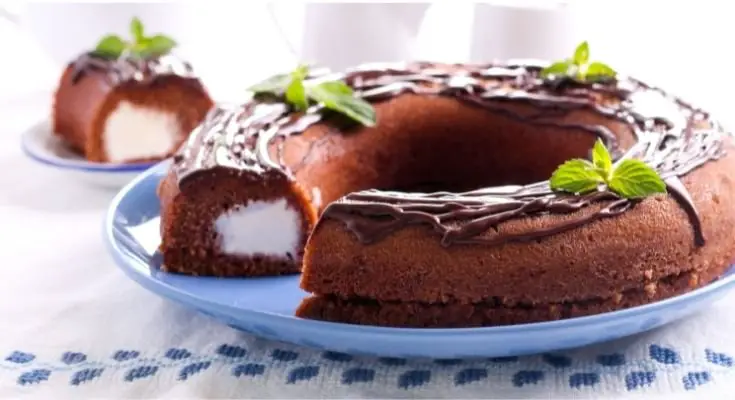Cakes are delightful treats enjoyed on various occasions, from birthdays to weddings and everything in between. Sometimes, we find ourselves with extra cake, or we might want to prepare in advance for an upcoming event. This brings up a common question: Can you freeze a filled cake? Freezing cakes can be a useful strategy to preserve their freshness and taste, but when it comes to filled cakes, the process requires a bit more consideration.

Understanding Cake Fillings
Before we delve into the freezing process, let’s first understand the different types of cake fillings.
Cake fillings come in a wide variety, ranging from classic buttercream and cream cheese fillings to fruit preserves, custards, and ganache.
Each filling type has its own unique characteristics, which can influence the freezing process.
Types of Cake Fillings
- Buttercream: A rich and creamy filling made from butter, sugar, and flavorings.
- Cream Cheese: A tangy and smooth filling made from cream cheese, sugar, and sometimes additional flavorings.
- Fruit Preserves: Sweet fruit preserves, like raspberry or strawberry, add fruity goodness to the cake.
- Custards: Rich and velvety custard fillings come in various flavors like chocolate, vanilla, or lemon.
- Ganache: A luxurious mixture of chocolate and cream, offering a decadent filling option.
Freezing Unfilled Cakes
Before we discuss filled cakes, let’s cover the basics of freezing unfilled cakes. If you have a plain cake without any filling, freezing it is a straightforward process.
Allow the cake to cool completely, wrap it tightly in plastic wrap or aluminum foil, and place it in an airtight container before freezing.
Properly frozen, the unfilled cake can maintain its quality for up to three months.
Freezing Cake Fillings
When it comes to freezing cake fillings, the approach varies depending on the type of filling. For buttercream and cream cheese fillings, freezing is generally not recommended. The texture of these fillings may change, becoming grainy or separated after thawing.
However, fruit preserves, custards, and ganache can handle freezing better. For these fillings, store them in airtight containers, leaving some space for expansion, and freeze. When you’re ready to use them, ensure they thaw in the refrigerator for a smooth consistency.
Freezing the Assembled Cake
If you need to freeze an entire filled cake, it’s essential to follow the right steps to maintain its taste and structure.
Start by assembling the cake with the chosen filling, making sure all the layers are firmly in place. Then, lightly coat the assembled cake with a crumb coat to seal in moisture.
Next, wrap the cake in several layers of plastic wrap, ensuring no part is exposed. For additional protection, place the wrapped cake in a sturdy, airtight container or cake box. This will prevent the cake from absorbing any odors in the freezer.
Thawing and Serving Frozen Cakes
Thawing a frozen filled cake is a gradual process. Transfer the wrapped cake from the freezer to the refrigerator and allow it to thaw slowly.
It’s best to keep the cake wrapped during thawing to retain moisture. Avoid rushing the process with a microwave or warm water, as this can negatively impact the cake’s texture.
Once the cake is fully thawed, remove it from the refrigerator and let it sit at room temperature for about an hour before serving.
This will allow the flavors to come alive, and the cake will taste as fresh as when it was first baked.
Tips for Freezing Cakes
- If you’re planning to freeze cake layers, consider wrapping them individually to prevent sticking.
- Label and date the containers or packages before freezing to keep track of the cake’s freshness.
- Avoid freezing cakes with delicate decorations, as they might get damaged during the freezing and thawing process.
FAQs
Cream fillings, like buttercream and cream cheese, do not freeze well as they may change in texture after thawing.
Unfilled cakes can maintain their quality for up to three months in the freezer, while filled cakes are best consumed within a month of freezing.
It is possible to freeze a fondant-covered cake, but it’s crucial to wrap it carefully to avoid condensation affecting the fondant.
Cakes with fruit preserves or fruit fillings can be frozen successfully. Store them in airtight containers and thaw them in the refrigerator.
Conclusion
In conclusion, freezing filled cakes can be a practical way to preserve these delectable treats for future enjoyment.
While certain fillings freeze better than others, it’s essential to pay attention to the type of filling and follow the appropriate steps for freezing and thawing.
With the right approach, you can have a delicious, ready-to-serve cake whenever you need it.
